April 17, 2024
E46 M3: Why Are They So Universally Loved?
Intro
Prompt a gearhead to answer this question and you’ll be met with a dizzying barrage of enamoured proclamations. The naturally aspirated S54 inline-6 powering the E46 was newly conceived by BMW’s in-house motorsport division GmbH to be a high revving powerhouse that would propel the lightweight body of the third generation M3 with 333 horses. This high performance 3-series creation was matched with a 6-speed manual or optional 6-speed SMG-II automated manual transmission and supported by excellent suspension and steering systems. With upgraded BBS wheels and a choice of a variety of M3 badged trims, the E46, assembled at BMW Regensburg factory in Germany, was produced from 2000 to 2006. 85,000 were sold in that time, making it the most successful BMW M model to date.
This third Generation M3 arrived at the turn of the decade and was discontinued two years before the financial crisis of 2008. It provided an urban race car for the upcoming affluent who in tumultuous times wanted personal power and freedom in their choice of an automobile. The M3’s offering of European performance coupled with the North American muscle car ethos fit the mood of the times, straddling luxury and escapism. It also set the standard against which other cars were measured, setting a reference point for competitors in the Audi RS5 and the Mercedes-Benz W203 AMG.

Design
In some ways the E46 M3 was emblematic of many much-loved aspects of the first M3, the E30: raw and lightweight with a visceral engine note. In design terms, it bridges the gap between the boxy E36 and the bubbly E92. Its wide track width, lowered side skirts, modified front apron, “Gurney flap” spoiler lip, and small side mirrors optimise aerodynamics and leave an unmistakable impression of athleticism. The bold character of the front apron with its wide openings had the functional advantage of keeping water and oil at the right temperature and cooling the car’s powerful brakes. Originally intended as engine cooling air ducts, it has chrome-plated gills horizontally placed along the upper front fender, that proved inutile but remained purely for looks. Not so with the raised centre of the hood, which necessarily created space for the intake system of the powerful engine - also betrayed by quad at the back. The precedent and successive M3’s provided sedan body options, but the E46 ultimately enabled no such hubris, although a prototype was considered.
With a three-spoke steering wheel, brushed aluminium trim on the shifter, door handles, and dash, and manual adjustable seats, the E46 interior is well-placed and prudent. The leather bucket seats are an oft-praised aspect of this economical cabin; adaptable, supportive, and spacious. This time-tested design remained largely unchanged during the model’s run, a testament to its favoured place in the annals of BMW history.

Engine and Chassis Design
The 3.2L S54B32 engine with a dual overhead cam and 24-valve inline-6 bringing 333 horsepower was powerful and smooth, with double VANOS variable valve timing for improved performance, and reduced emissions, noise, and vibration. Individual throttle bodies at each cylinder now came with electronic throttle control. The S54 is widely considered to be one of the greatest naturally aspirated engines ever built, boasting eight “Engine of the Year” awards. It has an enchanting sound that gets the heart racing along with its throaty mechanical roar as it moves through its midrange to its 8000 rpm redline. Torque on the S54 is somewhat modest, 268 lb-ft at 4900, so one spends ample time near the top of the tach delighting in that beloved engine note. The E46 M3’s journey from 0 to 100 km/hr takes 4.8 seconds, a 3450 lb curb weight posing no problem for the S54.
The Getrag 420G 6-speed transmission could be upgraded with the SMG II automated sequential manual - employing an electro-hydraulically actuated clutch and operated with either the shift paddles behind the wheel or the gear lever in the centre console. This gearbox achieved the fastest shift times in the world, at just 80 milliseconds. The world over, the E46 was famed for the connectivity of its controls with the driver experience: quick steering, big brakes, suspension, gearbox, and engine weaving a compelling tapestry of synchrony.
The chassis in the E46 was somewhat less compliant than that of the E36, with the engineering intentionally veering more toward the engine in the newer car. Suspension in the E46 employed a new subframe assembly and aluminium parts for a lower unsprung weight. BMW’s ubiquitous 50/50 weight distribution (50.3% front and 49.7% rear to be exact) resulted in a ride quality that was controllable and neutral, aided by heavy but responsive hydraulic steering. The drive axle features a standard limited slip differential, with a variable locking transfer case allowing for excellent traction in corners and tantalising drifting possibilities.
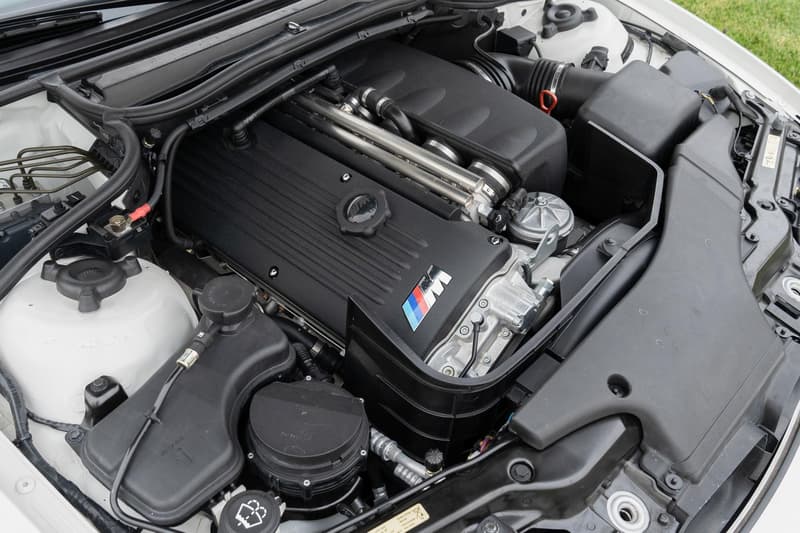
Special Editions and Motorsport
Released in 2003, the limited edition European CSL (“coupe-sport-leichtbau”) variation scaled the M3 up to a new level. BMW managed to decrease the curb weight to 3053 lbs. They used a carbon fibre roof, lowering the car’s centre of gravity and marking the first time that BMW would make the carbon fibre roof a visibly noticeable feature, which became a design highlight for M cars going forward. Carbon fibre was also used in the centre console, door panels, door trim, and headliner. A carbon fibre front splitter improved downforce at high speeds by 50%. The power to weight ratio in the CSL was an impressive 3.85 kg/hp, made possible by the lightweight composite materials present in the rear diffuser, front apron, intake and interior, and with the aluminium hood, fibreglass racing seats, and thin rear window glass. BMW also opted to delete the electric seats, navigation, A/C, and the stereo, all in the name of weight savings. The CSL featured a retuned electronic stability control system and a carbon fibre airbox that created a vortex of air that maintained maximum air induction pressure, maximising throttle response. Revised suspension featured stiffer springs, upgraded shock absorbers, and a quicker steering rack ratio (14.5:1 vs 15.4:1 on the regular M3). Horsepower increased to 360 hp in the CSL, which achieved lap times under 8 seconds on the Nürburgring’s Nordschleife circuit. One single button is present on the wheel of the CSL: track mode. Buyers who possessed a motorsport licence could order the CSL with its speed limiter removed.
In 2005, BMW introduced the CS Competition Package (code ZCP in the US and mainland Europe, CS in the UK). The CS provided all of the upgraded trimmings of the CSL like upgraded suspension, drilled brakes, faster steering ratios, and track mode, but included some Alcantara interior trimmings and, most notably, the option of the Getrag 6-speed instead of the SMG II, which was the preferred gearbox by many.
In the world of professional motorsport, the third gen M3 spawned the GTR Race model, distinguished with its wide fenders, lowered skirts, and massive rear wing. It made waves in the 2001 American Le Mans racing season, winning titles in the driver, constructor, and team contests, and also achieving victories at the Nürburgring in 2004 and 2005. At the ALMS in 2001, the eligibility of the GTR came into question, as the regulators required manufacturers to have a fully road-legal counterpart. The GTR was accused by rival teams of being an in-house prototype. This prompted BMW to produce ten BMW M3 GTR Street cars, of which just 6 were available for purchase. These rare beasts had a 4.0L P60 V8 with a 90 degree cylinder angle which copied the P60B40 engine design present in the racing version. The street legal version offered 382 hp, while the racing versions had an output of 444 hp. Its curb weight was just 2,976 lbs; the roof, front and rear aprons, and rear wing were made of carbon fibre reinforced plastic, just as in the racing version. The GTR so captured the imagination of driving enthusiasts that the 2005 release of the video game Need for Speed: Most Wanted featured the M3 GTR on the box cover in a blue and silver livery.
Conclusion
The BMW E46 M3 is situated in automotive history as a definitive icon of the Bavarian Motor Werke brand. The model’s success in international touring and endurance racing events secured its reputation as a paragon of performance. The high-revving S54B32 engine presents an endlessly alluring challenge, and the muscular body style manifests a design language that many bimmer fans prefer to this day. Comparisons are made to the Honda S2000 and the Nissan R34 GT-R. Timeless classics such as these serve as rare portals to a moment in time when culture, economy, and technology coalesce in perfect harmony.






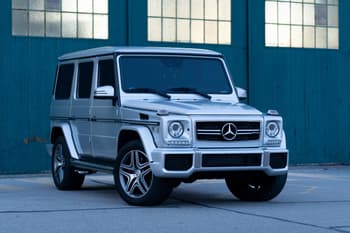
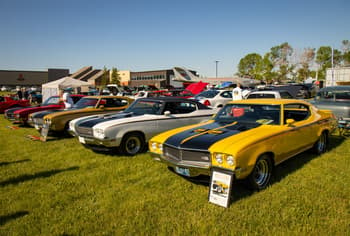









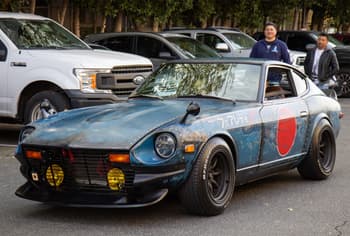
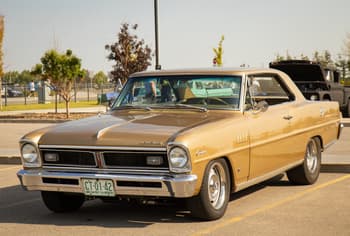

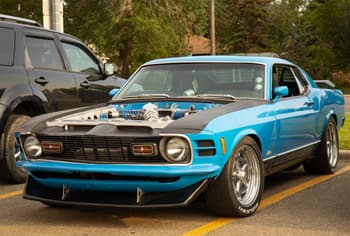


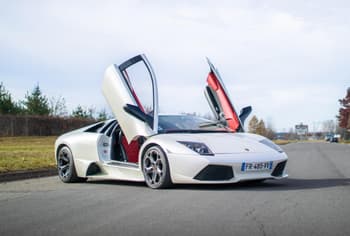

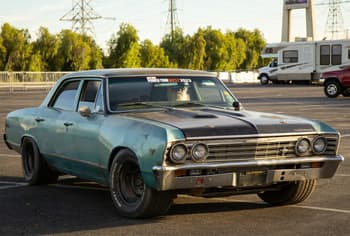


 Back to Login page
Back to Login page